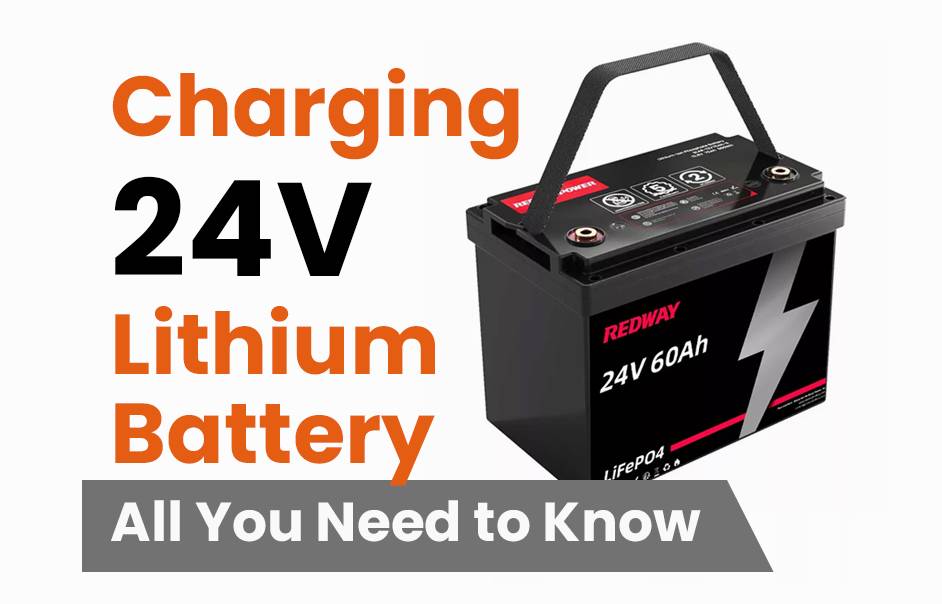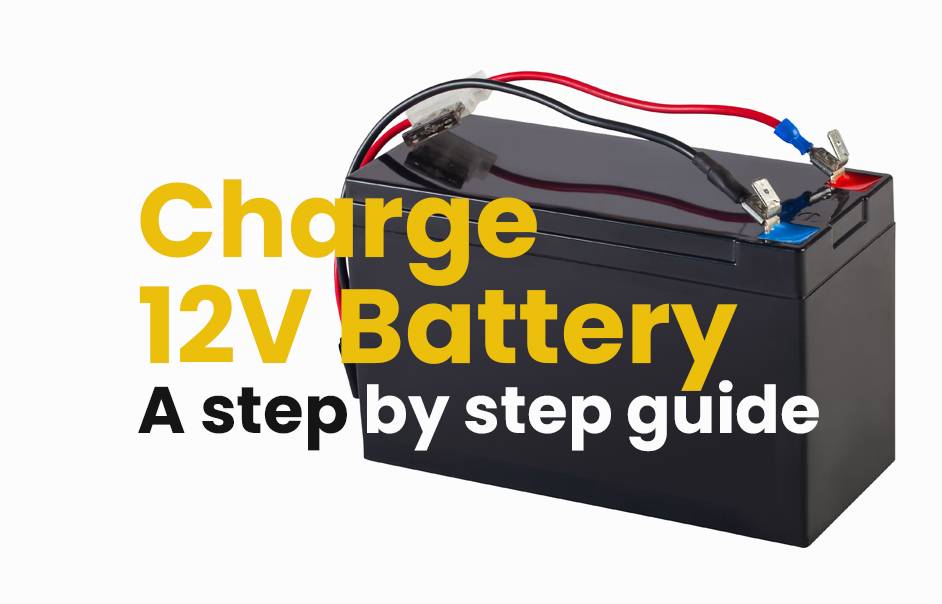
Blog
How to Charge a 24V Lithium Battery: All You Need to Know

Charging a 24V lithium battery safely and effectively requires using a compatible charger set to the correct constant current (CC) and constant voltage (CV) profile, typically around 29.2 to 29.6 volts. It is essential to monitor the charging current, avoid overcharging, and follow manufacturer recommendations to ensure battery longevity and performance.
How do you safely charge a 24V lithium battery?
Safely charging a 24V lithium battery involves using a charger specifically designed for lithium iron phosphate (LiFePO4) or the battery chemistry to deliver the appropriate charging profile. The process is divided into constant current (CC) and constant voltage (CV) phases. The charger initially supplies a steady current until the battery voltage reaches approximately 29.2-29.6V. Then, the charger maintains this voltage while gradually reducing the current until the battery is fully charged. Avoid charging when the battery is completely drained to prevent damage. Additionally, ensure proper ventilation and inspect battery and charger equipment for any damage before charging.
What is the ideal charging voltage and current for a 24V lithium battery?
The ideal charging voltage for a 24V lithium battery (LiFePO4) is typically between 29.2V and 29.6V. The safe charging current is usually set at 0.2C (where C is the battery capacity in ampere-hours). For example, a 100Ah battery would have a charging current of 20A. Charging at this rate balances efficient charge times with battery health preservation. Higher charging currents may be possible but should align with the manufacturer’s guidelines to avoid overheating and reduce longevity.
Which chargers are best suited for charging 24V lithium batteries?
Smart lithium battery chargers designed specifically for LiFePO4 cells are the most suitable, as they automate the CC/CV charging profile to optimize battery health. Chargers with built-in safety features such as overvoltage protection, temperature sensors, and automatic cutoff after full charge are recommended. Solar charge controllers with MPPT (maximum power point tracking) functionality are also excellent for off-grid or renewable energy setups to efficiently charge 24V lithium batteries. Redway Power’s range of OEM chargers is optimized for such batteries, ensuring consistent and safe charging.
How do you set up and monitor a 24V lithium battery charging system?
To set up a 24V lithium battery charging system, connect the correct charger to the battery, ensuring polarity is correct, and cables are appropriately gauged to handle the current. Monitor charging using the charger’s indicators or a battery management system (BMS) that tracks voltage, current, and temperature. Regular checks during charging reduce risks of overcharging or overheating. It is vital to power down and disconnect the charger safely after charging completes, preferably disconnecting the negative terminal first to avoid short circuits.
How can you maintain and extend the life of 24V lithium batteries during charging?
Maintaining battery life involves avoiding deep discharges below 20-30% state of charge, using proper chargers designed for lithium chemistry, avoiding excessive charging currents, and preventing overcharging. Maintaining ambient charging temperatures between 10°C and 40°C also prolongs life. Employing a BMS like those integrated into Redway Power lithium battery packs ensures cell balancing, preventing individual cell degradation. Regularly updating charging equipment and following Redway Power’s operational guidelines maximizes battery lifespan and safety.
How does temperature affect charging and performance of 24V lithium batteries?
Temperature significantly influences lithium battery charging and performance. Charging below 0°C can cause lithium plating, damaging cells, while charging above 45°C risks overheating. Optimal charging temperatures range between 10°C and 40°C. Many advanced chargers incorporate temperature sensors to adjust or pause the charging process under unsafe conditions. Redway Power integrates thermal management within its batteries, maintaining ideal temperature ranges during charging and discharging cycles.
What are the main differences between charging lithium and lead-acid 24V batteries?
Unlike lead-acid batteries, 24V lithium batteries require precise charging voltages and currents to avoid damage, specifically a tailored CC/CV charging profile with termination at low current thresholds. Lead-acid chargers often overcharge lithium batteries, risking reduced battery life or safety hazards. Lithium batteries tolerate deeper discharges without harm, while lead-acid batteries require float charging and have less tolerance for deep cycling. Redway Power’s lithium packs demand lithium-specific chargers to ensure optimal performance and longevity.
How does Redway Power technology enhance the 24V lithium battery charging process?
Redway Power employs advanced manufacturing execution systems (MES) and integrates sophisticated battery management systems (BMS) into its lithium battery packs, enabling precise cell balancing, temperature control, and real-time monitoring during charging. These innovations minimize risk, optimize charging efficiency, and prolong battery life. Their OEM production emphasizes rigorous quality control complying with ISO 9001:2015 standards, making Redway Power batteries reliable for diverse applications like forklifts, marine, and solar systems.
What innovations improve safety and efficiency in lithium battery charging systems?
Modern lithium battery charging systems incorporate smart BMS technology, adaptive charging algorithms that adjust current and voltage in real-time, temperature and voltage sensors, and remote monitoring capabilities. MPPT solar charge controllers maximize charging efficiency. Redway Power’s battery packs leverage these innovations and reliable assembly techniques to reduce risks such as thermal runaway, overcharging, and undercharging, ensuring user safety and extending battery lifespan.
How do you troubleshoot common issues during 24V lithium battery charging?
Common issues include charger incompatibility, incorrect polarity, poor cable connections, and battery temperature extremities. Troubleshooting involves verifying charger specifications match battery requirements, inspecting all wiring setups, checking BMS alerts on battery status, and ensuring ambient conditions meet recommended parameters. Using Redway Power’s technical support and guidelines allows users to resolve these issues quickly and safely, preventing damage and optimizing operation.
Charging Profile for 24V Lithium Battery (CC/CV Phases)
| Phase | Voltage Range (V) | Current Behavior | Duration Approximation |
|---|---|---|---|
| Constant Current(CC) | Start to ~29.6 V | Constant current (e.g., 0.2C) | Majority of charge |
| Constant Voltage(CV) | ~29.6 V | Voltage held stable, current tapers | ~1-2 hours |
Temperature Impact on Lithium Battery Charging
| Temperature Range | Charging Suitability | Risks |
|---|---|---|
| Below 0°C | Not recommended | Lithium plating, cell damage |
| 10°C to 40°C | Optimal charging range | Safe and efficient charging |
| Above 45°C | Not recommended | Overheating, safety hazards |
Redway Power Expert Views
“At Redway Power, our commitment to precision in lithium battery manufacture and charging technology drives every innovation. Our OEM expertise spans 13 years and incorporates MES processes to ensure the highest safety and efficiency standards. Charging your 24V lithium battery with our recommended smart chargers extends battery life and enhances performance, vital for demanding applications from forklifts to solar systems. Adhering to specified charging protocols is not just a recommendation—it is fundamental to protecting your investment and ensuring operational excellence.” — Senior Engineer, Redway Power
Conclusion
Charging a 24V lithium battery correctly requires understanding its specific voltage and current needs, employing compatible smart chargers, and maintaining optimal environmental conditions. Incorporating advanced technologies like those in Redway Power’s OEM battery solutions ensures safety, efficiency, and extended battery life. By adopting best charging practices, monitoring conditions closely, and avoiding common pitfalls, users can maximize their battery’s performance across a broad range of applications.
FAQs
Can I use a regular lead-acid charger for a 24V lithium battery?
No, lead-acid chargers do not provide the correct charging profile and can damage lithium batteries.
What happens if I overcharge a 24V lithium battery?
Overcharging may cause overheating, reduce battery lifespan, or create safety risks such as thermal runaway.
How often should I charge my 24V lithium battery?
Charge regularly before the battery drops below 20-30% state of charge to maintain health and longevity.
Does temperature affect charging speed?
Yes, charging at optimal temperatures (10°C to 40°C) ensures efficient and safe charging; extreme temperatures can slow or damage the battery.
How can Redway Power batteries improve my charging experience?
Redway Power’s batteries integrate advanced BMS and MES-produced quality, offering safer, more reliable charging and longer service life.




